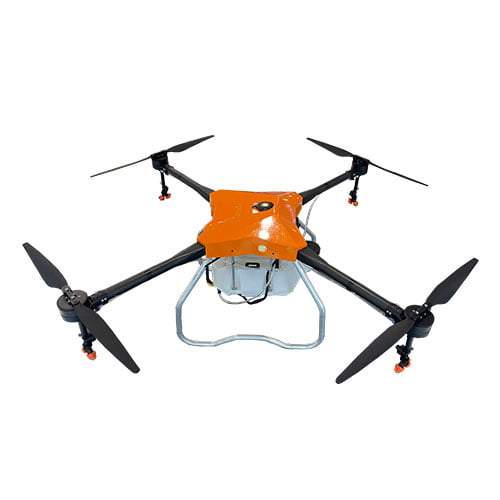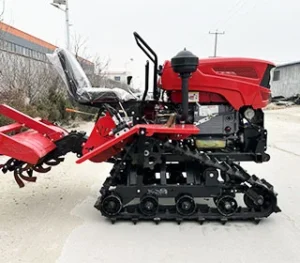Revolutionizing Farming: Agriculture Drones for Spraying
Introduction
In recent years, the use of agriculture drones for spraying has been revolutionizing the farming industry. These unmanned aerial vehicles equipped with spraying systems offer numerous advantages, including increased efficiency, reduced labor costs, and precise application of fertilizers and pesticides. In this blog post, we will delve into the world of agriculture drones for spraying and explore their impact on modern agriculture.
Understanding Agriculture Drones for Spraying

Agriculture drones for spraying, also known as crop dusters or UAV sprayers, are unmanned aerial vehicles equipped with specialized spraying systems. These drones are designed to fly over agricultural fields and apply pesticides, herbicides, fertilizers, and other agrochemicals with precision and accuracy.They offer farmers a cost-effective and efficient alternative to traditional spraying methods, reducing the need for manual labor and minimizing chemical exposure. Agriculture drones for spraying can cover large areas quickly and access hard-to-reach or uneven terrain, ensuring even distribution of chemicals and optimal crop health. With advancements in technology, these drones are becoming increasingly popular in the agriculture industry for their ability to increase productivity and yield while reducing environmental impact.
Key Benefits of Agriculture Drones for Spraying
Agriculture drones for spraying offer a range of benefits that are transforming the way farmers manage their crops. Some key advantages include:
Precision Application: Drones can precisely target areas that require treatment, reducing wastage of chemicals and minimizing environmental impact.
Time and Cost Efficiency: By automating the spraying process, drones can cover large areas in a fraction of the time it would take traditional methods, saving farmers both time and money.
Improved Safety: Using drones for spraying eliminates the need for farmers to come into direct contact with potentially harmful chemicals, enhancing safety in the workplace.
Data Collection: Drones can also be equipped with sensors and cameras to collect valuable data on crop health, moisture levels, and more, allowing farmers to make informed decisions about their fields.
Case Studies: Real-World Applications of Agriculture Drones
Here’s an example of a table illustrating the impact of agriculture drones for spraying through real-world case studies:
| Case Study | Impact of Agriculture Drones |
|---|---|
| Increased Yields in Vineyard Farming | – Vineyard in California reported a 15% increase in grape yields after using drones for targeted pesticide application. |
| Cost Savings in Wheat Farming | – Wheat farmer in Kansas reduced pesticide usage by 20% and saved $10,000 annually on spraying costs by employing drones for precision spraying. |
| Enhanced Crop Health in Fruit Orchards | – Fruit orchard in Florida achieved a 25% reduction in crop losses due to pests and diseases after implementing drone-based spraying, leading to healthier trees and higher-quality fruit. |
| Environmental Benefits in Rice Farming | – Rice farmer in Vietnam reduced chemical runoff into nearby waterways by 30% and minimized environmental impact by adopting drones for precise pesticide application. |
| Improved Efficiency in Corn Farming | – Corn farmer in Iowa saved 50% on labor costs and completed spraying tasks 30% faster by using drones, allowing for timely application of agrochemicals during critical growth stages. |
These case studies highlight the diverse benefits and positive impact of agriculture drones for spraying in various farming operations.
Applications of Agriculture Drones for Spraying

Agriculture drones are versatile tools employed for a wide range of spraying tasks, including:
- Pesticide Application: Agriculture drones are commonly used to apply pesticides, herbicides, and fungicides to crops, targeting specific areas with precision and reducing pesticide use.
- Nutrient Spraying: Drones can efficiently apply liquid fertilizers and micronutrients to crops, ensuring uniform distribution and optimizing nutrient uptake.
- Seed and Biocontrol Agent Application: Drones can distribute seeds, cover crops, and beneficial biocontrol agents to fields, promoting sustainable pest management practices.
- Defoliation and Desiccation: Drones can apply defoliants and desiccants to crops, preparing them for harvest and improving grain quality.
The Future of Agriculture Drones for Spraying
As technology advances and regulations evolve, the future of agriculture drones for spraying is bright. With increased autonomy, improved spraying systems, and enhanced data analytics capabilities, drones are poised to play an even more significant role in transforming modern agriculture.
Potential Future Applications:
- Autonomous Spraying: Drones could operate autonomously, following pre-programmed routes or using real-time data to optimize spraying patterns.
- Variable-Rate Spraying: Drones could adjust spray rates based on real-time crop data, ensuring precise application and minimizing over-application.
- Integrated Pest Management: Drones could be integrated into comprehensive pest management programs, utilizing data-driven insights to target pest outbreaks and optimize control strategies.
Conclusion
In conclusion, agriculture drones for spraying are revolutionizing the farming industry by offering precision, efficiency, and safety benefits. As technology continues to advance, we can expect to see even more innovative applications of drones in agriculture, further enhancing productivity and sustainability in farming practices.
By embracing this cutting-edge technology, farmers can optimize their operations, increase yields, and contribute to a more sustainable future for agriculture.
Remember, the key to success with agriculture drones lies in proper training, maintenance, and integration into existing farm practices. With the right approach, agriculture drones for spraying have the potential to transform the way we grow our food.
FAQ
Are agriculture drones easy to operate?
Yes, most agriculture drones are designed to be user-friendly and come with intuitive controls that require minimal training.
What is the range of agriculture drones for spraying?
The range of agriculture drones can vary depending on the model, but most drones can cover several acres on a single battery charge.
Are agriculture drones cost-effective?
While the initial investment in agriculture drones may be significant, the long-term cost savings in labor and chemical usage often outweigh the upfront costs.
Are agriculture drones for spraying safe for the environment and wildlife?
When used responsibly and according to best practices, agriculture drones for spraying can be environmentally friendly. By targeting specific areas of crops and minimizing chemical runoff, drones can reduce the impact on surrounding ecosystems and wildlife habitats.
What factors should farmers consider when investing in agriculture drones for spraying?
When considering investing in agriculture drones for spraying, farmers should evaluate factors such as the size of their farm, crop types, regulatory requirements, available budget, and training needs. It’s essential to conduct thorough research and consult with experts to determine the best drone technology for specific farming operations.


